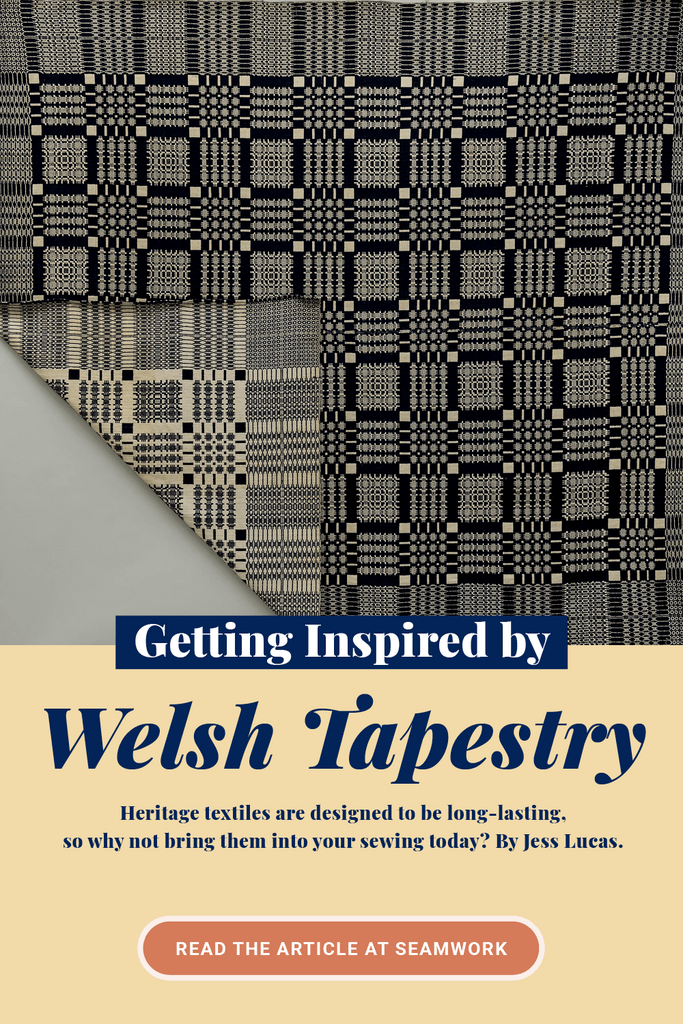Have you ever used history to plan your sewing? My name is Jess, and I run a podcast called Woven Threads, where I explore some of the craft, art, and heritage that is woven through all of our lives.
In this Threads of Time series, I will look at a different moment in the history of fashion here in the UK and focus on the craft exhibited in that particular snapshot in time and use my research to make a garment using a Seamwork pattern. I hope my projects will inspire you to look at the incredible history we have around us and use it to fuel your own projects.
In the history of British textiles, few give me such joy as looking at Welsh tapestry blankets. Last autumn, I took a little road trip with my family down to the west of the United Kingdom to visit Wales, and more specifically, to visit one of the last remaining working mills in the country. So what are Welsh tapestry blankets, I may hear you ask?! Well, I am very happy to introduce you to them if you have never heard about them before, as they are a textile lover's dream and a big part of the textile heritage here in the UK.
A Brief History of Welsh Tapestry
Wales is a country in the southwest of the UK and is home to beautiful singers and voices, great mountains, and lots of sheep. And it's the sheep that start us off on our journey through the craft of tapestry blankets.
Wool has been one of the largest exports and industries from the British Isles since the Middle Ages. Although there is evidence of spinning and weaving before then, it was around the 12th century that wool became a central part of the Welsh economy. The rural communities dotted around the mountains and countryside would have spun and woven the fleece into textiles at home, creating a literal cottage industry. As with many textiles in times past, they were a treasured part of people's lives, because of the length of time and skill it would have taken people to create them. As such, they were often given as wedding gifts and used as bed covers for the family.
Traditional sheep fleece from the local Welsh sheep would have been very coarse because of the harsh rainy weather in the mountains. When it was woven, the coarseness of the fleece gave the resulting fabric a very hard-wearing quality, lasting for many generations. The fabric's construction hasn't really changed through the decades. Basically, it’s two layers of fabric woven over the top of each other and then attached to create pockets and a very distinct texture—the fabric almost feels quilted at points. Initially, it was constructed as two pieces with a seam. After the introduction of machine weaving in the 1800s, it was woven in one continuous long piece.
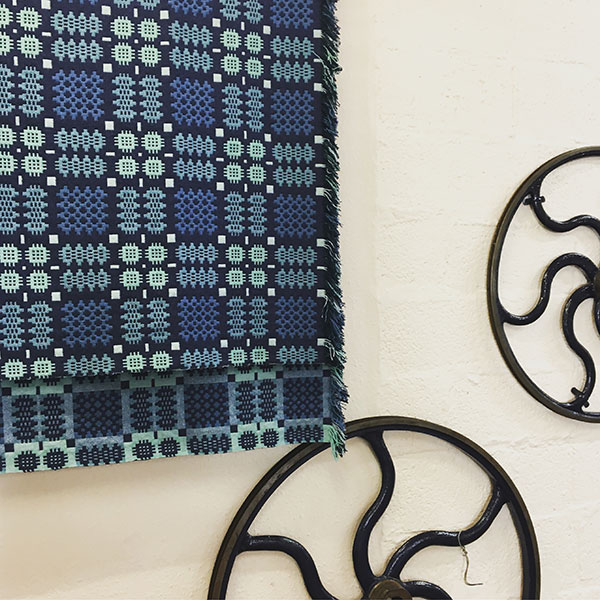
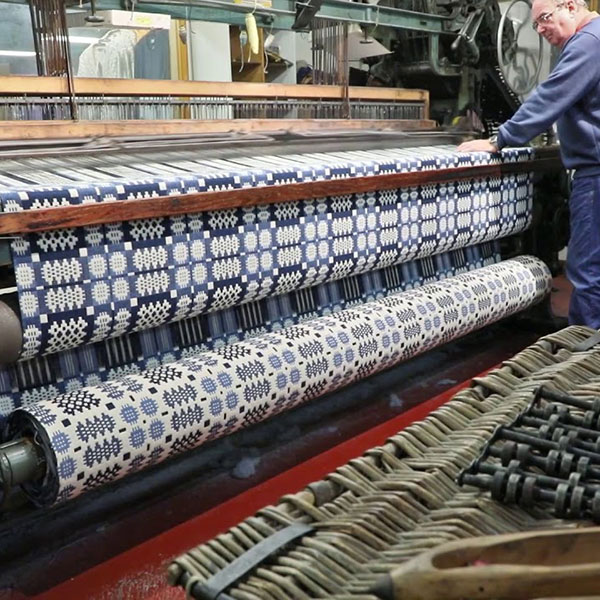
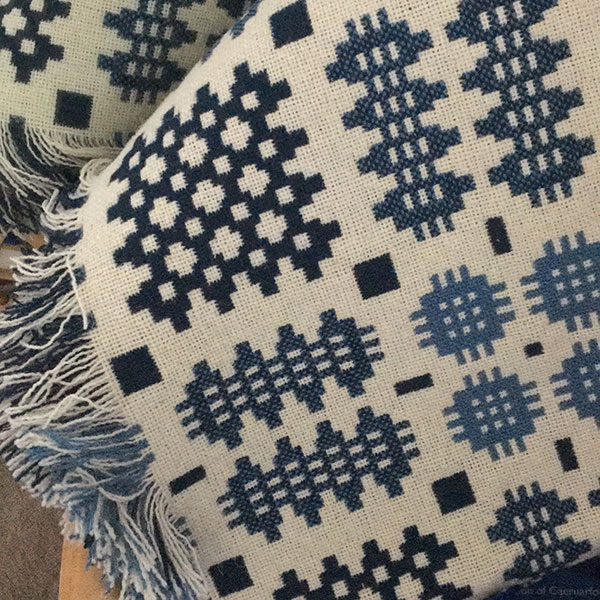
Tapestry Designs from Different Mills
Like Scottish plaid, where you find unique designs from different areas, blanket designs were often unique to the various mills around Wales. They each created designs, which could then be traced back to their mill. One of the most popular designs is called Caernarfon, named after a castle in North Wales.
In a tiny little records office in Denbighshire, in the north of the country, you'll find the pattern book of William Jones, conveniently dated by the man himself to the year 1772. Jones was a weaver from a small medieval town called Holt, and he meticulously kept a record of his tapestry blanket designs. Using squared paper, you can see the geometric patterns take shape; the repeats built up using just basic square and rectangle shapes.
Some experts believe that the Welsh designs relate to some of the North American folk textile traditions. From the 1790s, there were large immigrant Welsh communities in areas like Pennsylvania. If you look at the quilts and blankets from the surrounding area, there are many similarities with Welsh tapestry blankets.
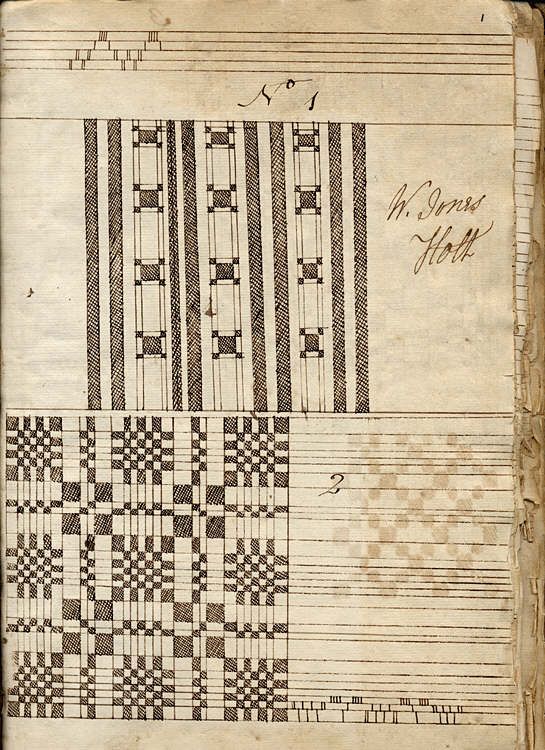
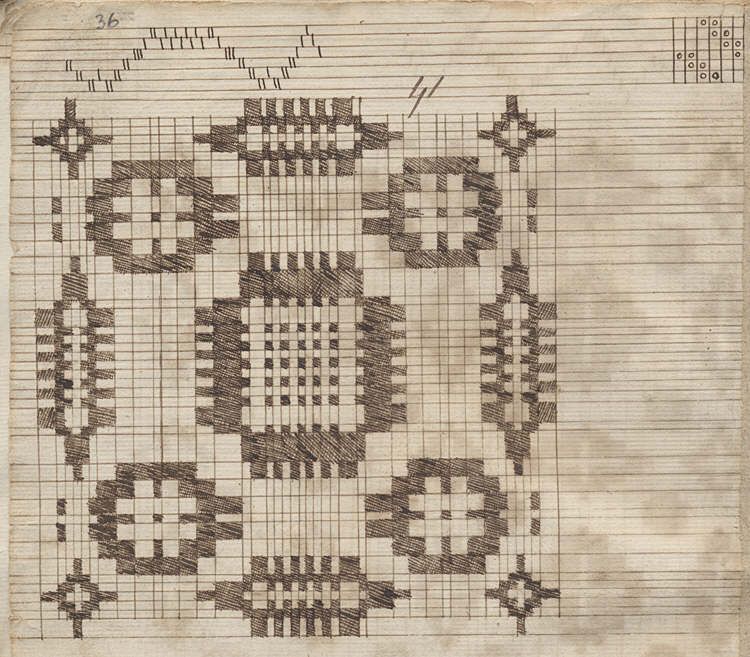
Modern Interpretations of Welsh Tapestry
Welsh tapestry has thankfully not been lost to the back of our nana’s cupboards. It was given a new lease of life in the 1960s as people were once again drawn to its geometric designs. The textile was no longer exclusively used for blankets and homeware, but clothing and accessories, designed mainly for tourists who couldn't get enough of the designs.
The British mod designer Mary Quant, famous for her mini skirts and the mod designs she originated, also loved a bit of Welsh tapestry. Born in London to Welsh parents, she was obviously inspired by the textile of the homeland with a few of her designs in the 1970s. In one dress in particular, she mixed the distinctive Welsh design with other geometric textiles. She was known to travel to Wales to source cloth for her designs from the mills there. Unfortunately, the change in industry and the recession of the 1980s closed a lot of the mills that had been the center of Welsh industry. At one time, there had been over 300, and today there are just four mills that are still using the traditional techniques to create these beautiful textiles.
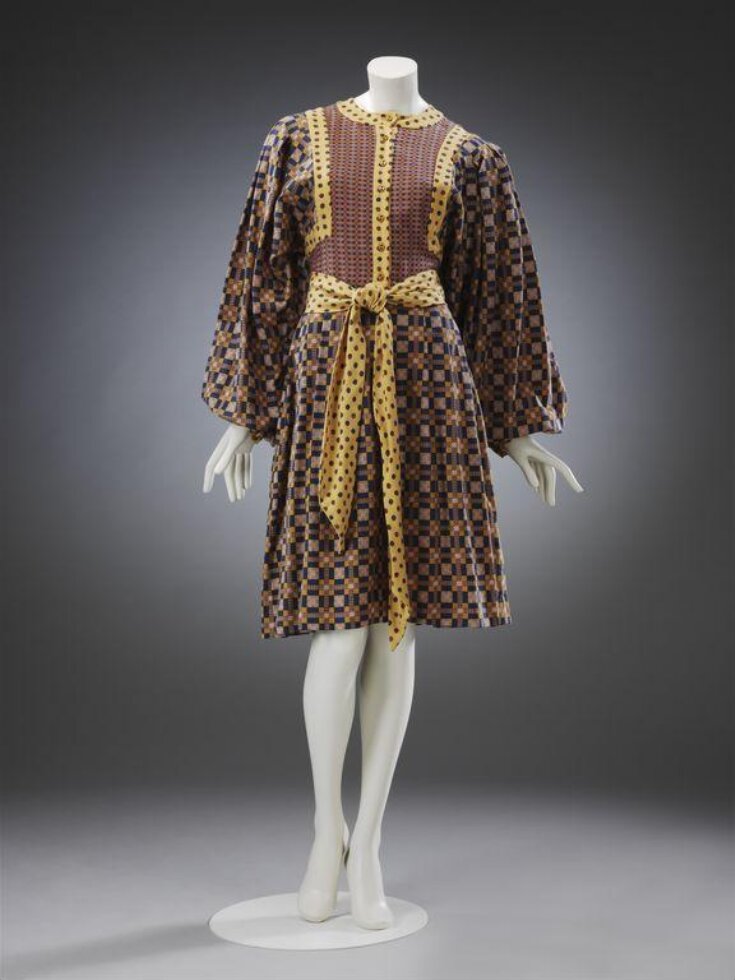
Using Welsh Tapestry in My Own Sewing
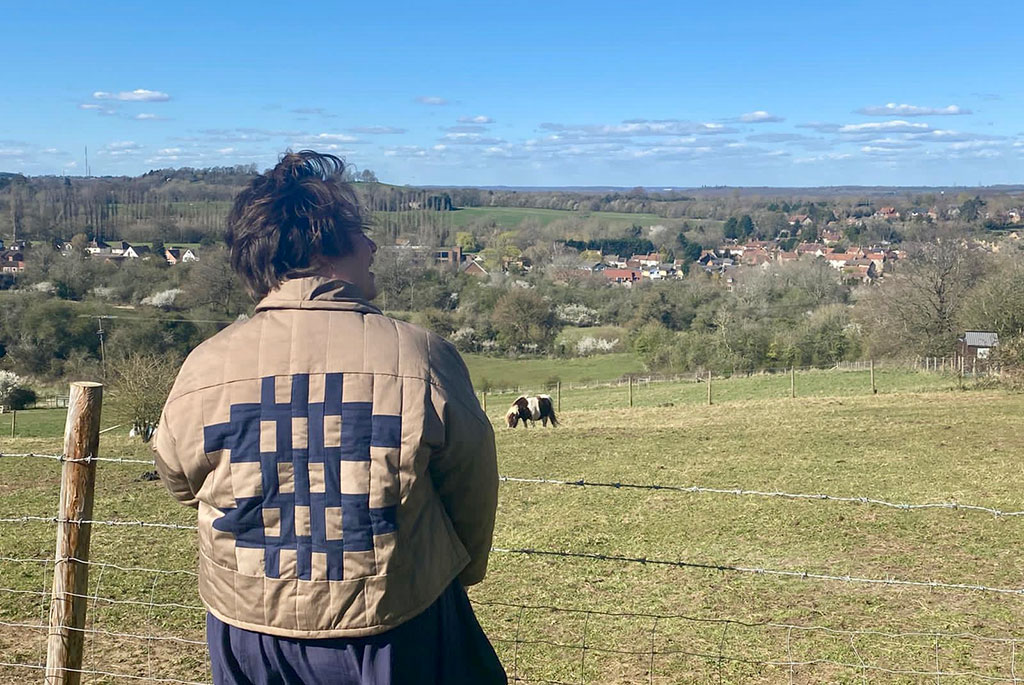
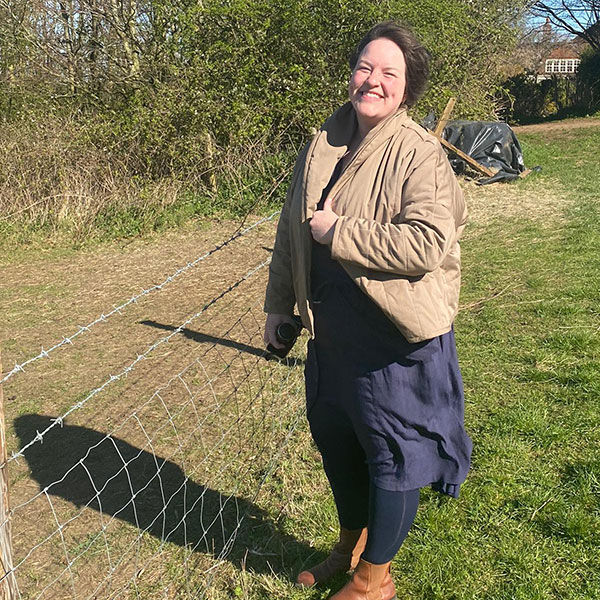
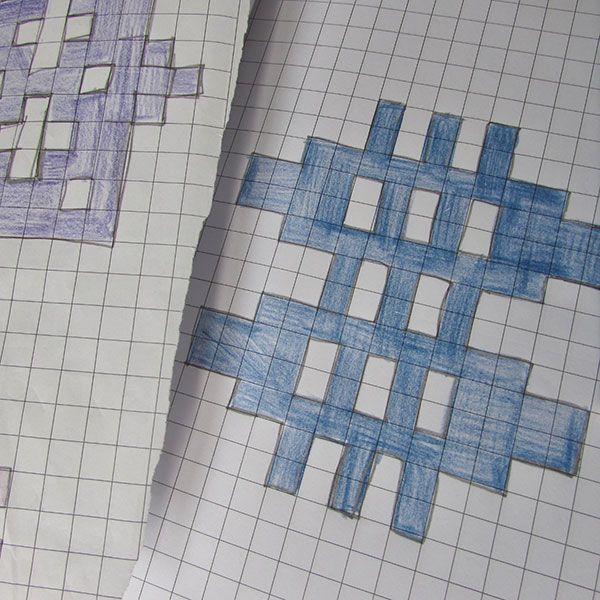
I wanted to take this rich history and use it to inspire my own design. When the Easton jacket came out, I knew I wanted to create a quilted jacket, and then suddenly it hit me. Could I take one of the historic Welsh designs and quilt it rather than weave it? A crazy experiment ensued.
A lot of the designs I really liked were quite intricate—it would have been difficult to scale the size to fit on the back of the jacket. So, in the end, I went with a modified design from the popular Caernarfon pattern. When I visited the mill last year, I treated myself to a blanket in white and blue that sat on my chair and inspired me through this process. I hope William Holt would be proud of me.
Creating the panel in the back took a bit of time, but I absolutely loved seeing it transform from a design on paper to a wearable jacket that I know I’m going to love for a long time.
Check out what textile traditions there are from your family history—you may be surprised at the gems you can find with a bit of digging. One of the main things I love about heritage textiles is that they were created to last and be loved for a long time. In an age of consumerism and fast fashion, it feels massively satisfying to take time to create something that you love and know you will wear for many years. I feel like the generations of Welsh blanket weavers would approve.


